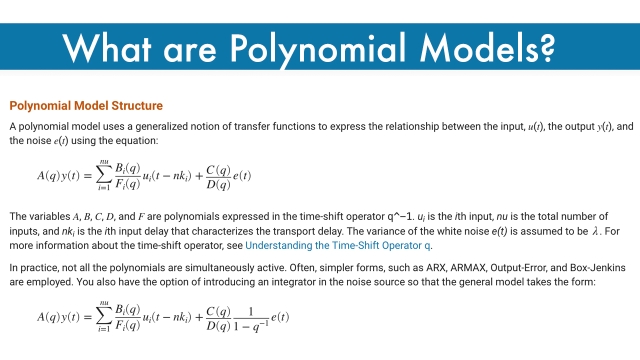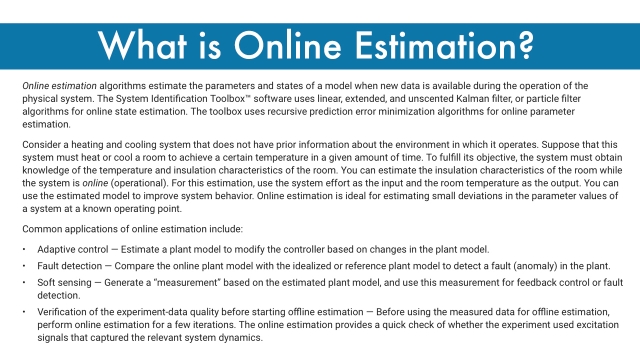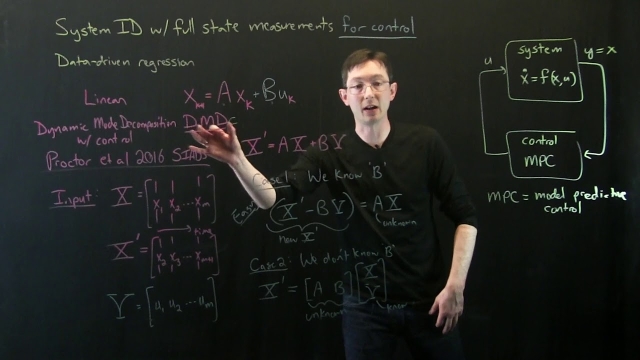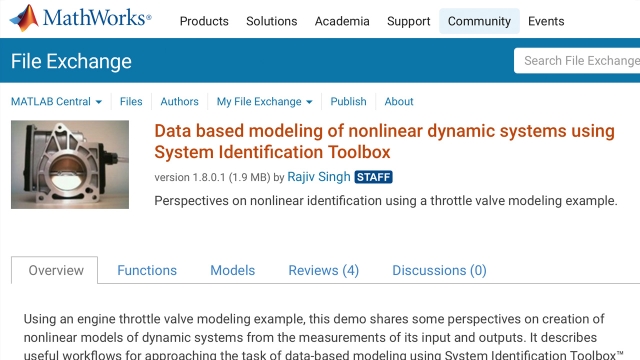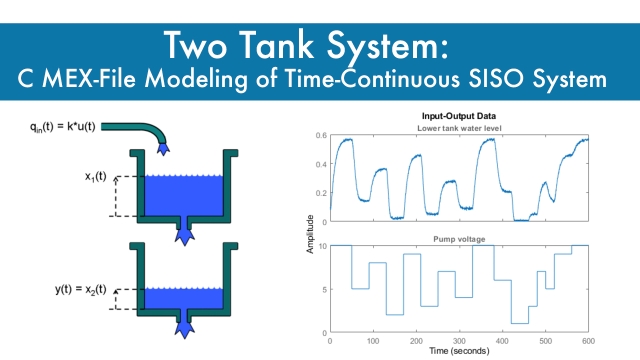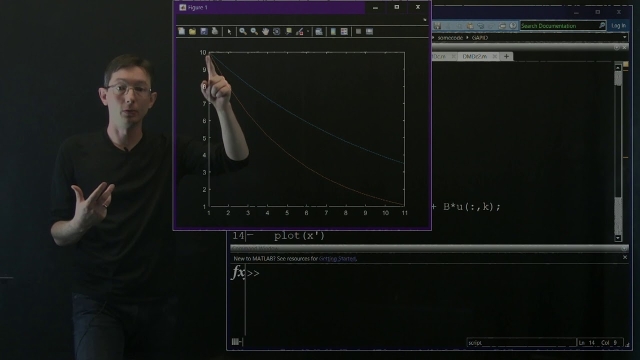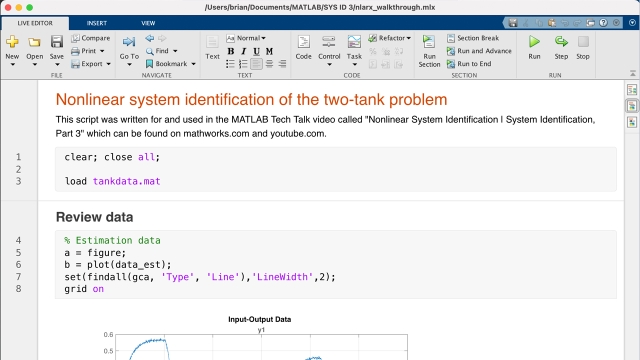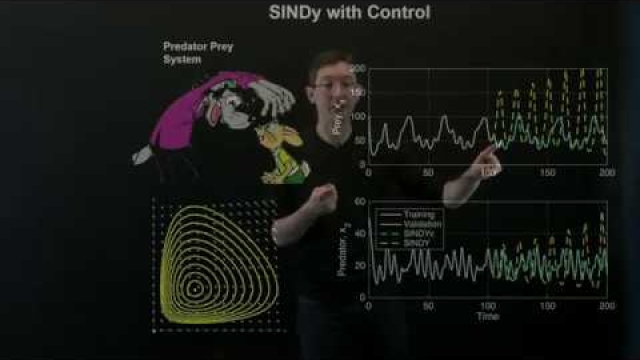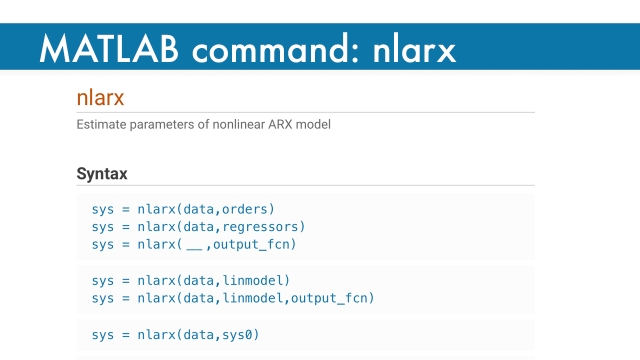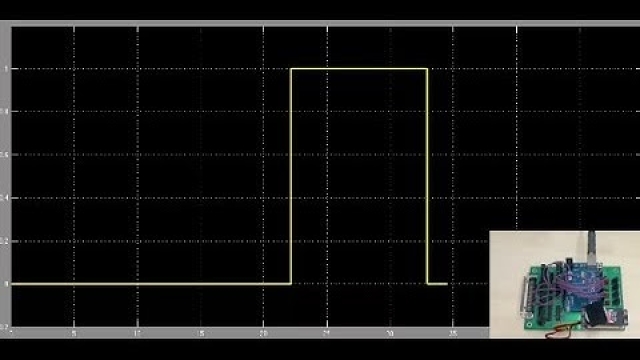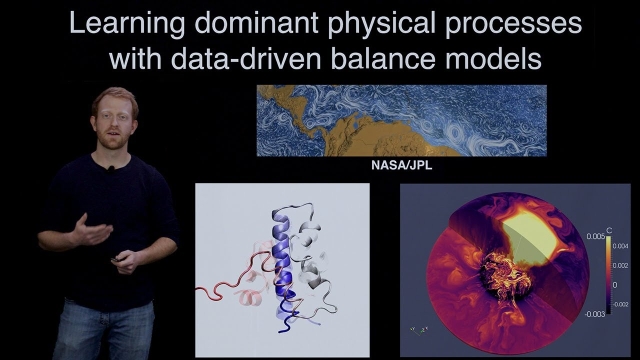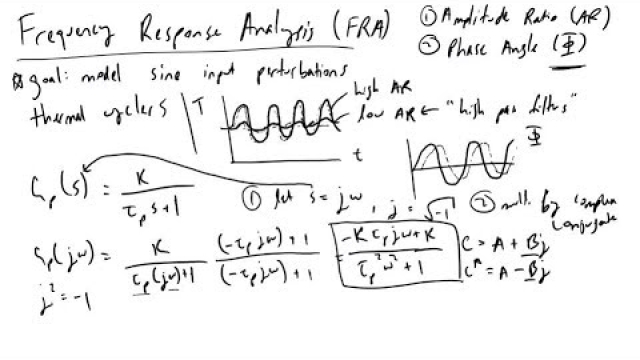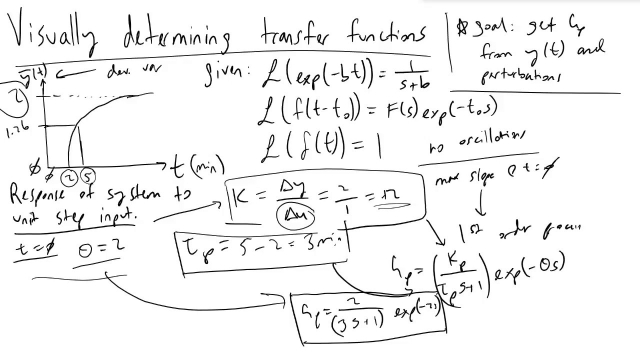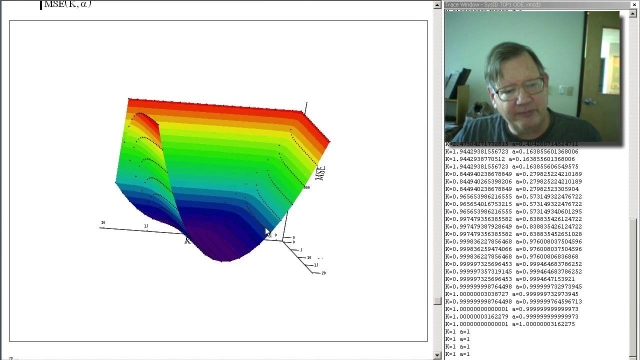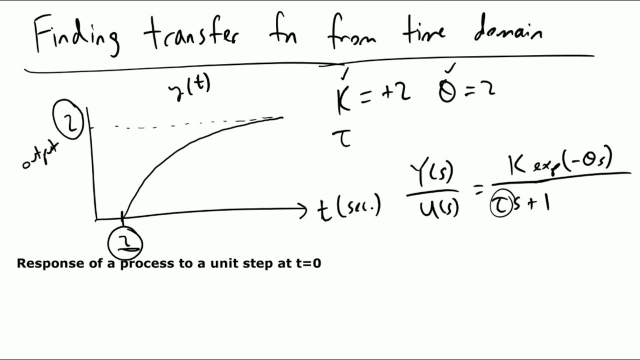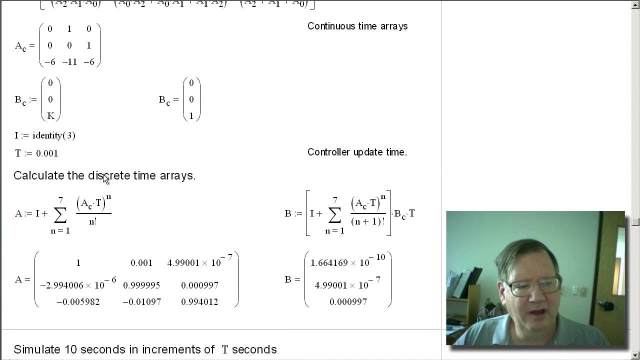The field of system identification uses statistical methods to build mathematical models of dynamical systems from measured data. System identification also includes the optimal design of experiments for efficiently generating informative data for fitting such models as well as model reduction. A common approach is to start from measurements of the behavior of the system and the external influences (inputs to the system) and try to determine a mathematical relation between them without going into many details of what is actually happening inside the system; this approach is called system identification.
Topic
System Identification
This topic includes the following resources and journeys:
Type
Experience
Scope
What are Polynomial Models?
This Mathworks page provides an overview of polynomial models.
See MoreWhat Is Online Estimation?
This Mathworks document describes online estimation. Online estimation algorithms estimate the parameters and states of a model when new data is available during the operation of the...
See MoreSystem Identification: Dynamic Mode Decomposition with Control
This lecture provides an overview of dynamic mode decomposition with control (DMDc) for full-state system identification. DMDc is a least-squares regression technique based on the singular...
See MoreData based modeling of nonlinear dynamic systems using System Identification...
Using an engine throttle valve modeling example, this demo shares some perspectives on creation of nonlinear models of dynamic systems from the measurements of its input and outputs. It...
See MoreTwo Tank System: C MEX-File Modeling of Time-Continuous SISO System
This MATLAB example shows how to perform IDNLGREY modeling based on C MEX model files. It uses a simple system where nonlinear state space modeling really pays off.
See MoreSystem Identification: DMD Control Example
This lecture gives a Matlab example of dynamic mode decomposition with control (DMDc) for full-state system identification.
See MoreMATLAB scripts for "Nonlinear System Identification | System Identification,...
This Github repo contains the data files and MATLAB scripts that were used in "Nonlinear System Identification | System Identification, Part 3".
See MoreSystem Identification: Sparse Nonlinear Models with Control
This lecture explores an extension of the sparse identification of nonlinear dynamics (SINDy) algorithm to include inputs and control. The resulting SINDY with control (SINDYc) can be used...
See MoreMATLAB Documentation page: nlarx command
This is the Mathworks documentation page for the nlarx MATLAB command.
See MoreOnline Fault Detection for a DC Motor
Program embedded processors to estimate parameters and detect changes in motor dynamics in real time using System Identification Toolbox™.
See MoreIdentifying Dominant Balance Physics from Data - Jared Callaham
This video illustrates a new algorithm to identify local dominant physical balance relations from multiscale spatiotemporal data.
See MoreFrequency Response Analysis FRA and the Amplitude Ratio and Phase Angle
Process engineers model output response to inputs that oscillate via frequency response analysis (FRA). In this video, I'll go over amplitude ratios and phas...
See MoreVisually Determining Transfer Functions
Process Control classes can get pretty hard to follow when you lose sight of what transfer functions really are. How do you get them in the first place?
See MorePeter Ponders PID - System Identification Basics
Finding Transfer Functions from Response Graphs
Given a system response to a unit step change, in this video I'll cover how we can derive the transfer function so we can predict how our system will respond...
See More
